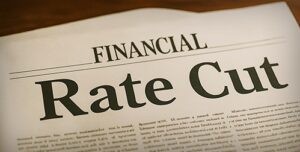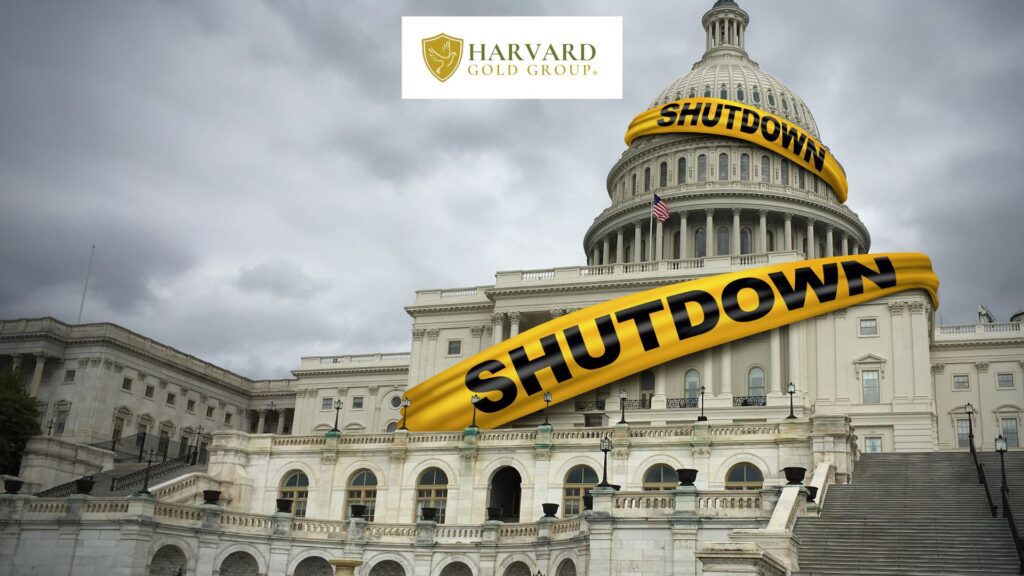
- The Federal Reserve cut rates 25 points to counter slowing growth and rising unemployment.
-
Economists and market veterans warn a 2025 recession may be unavoidable.
-
Protect your finances and purchasing power by diversifying with physical gold.
Rate Cuts: Too Little, Too Late
The Federal Reserve has officially shifted gears. After months of holding interest rates steady, the central bank cut its benchmark rate by 25 basis points—pivoting from fighting inflation to trying to support employment. Analysts are now asking whether this move can prevent a recession, or if the economy is already too close to the edge.
Signs of Trouble
Recent data is troubling. The August jobs report showed the economy added just 22,000 jobs, far below the 80,000 expected. The unemployment rate rose to 4.3 percent, its highest since October 2021. For the first time since April 2021, there are more unemployed workers than available job openings.
JP Morgan warned that “a slide in labor demand of this magnitude is a recession warning signal.” Similarly, economics professor Arindrajit Dube observed that the overall data “is increasingly pointing to a slowdown in the labor market that could reflect a recession.”
Credit and Consumer Stress Are Rising
Other cracks are appearing. The average FICO score fell to 715 between 2024 and 2025—its biggest drop since 2009. Fair Isaac Corp. notes that delinquencies on auto loans, credit cards, and personal loans are now at or near their highest levels since the Great Recession. These levels are “more consistent with an economy in recession than one still in expansion.”
The decline is sharpest among younger borrowers, as resumed student loan delinquency reporting drags down scores. Meanwhile, high interest rates make borrowing more expensive, and tariffs continue adding pressure on everyday essentials from gas to groceries.
UBS Sees a High Recession Probability
Global investment bank UBS estimates a 93 percent chance the U.S. enters a recession this year. Its review of personal income, consumption, industrial production, and employment shows a weakening trend.
UBS described the economy as “soggy, soft, weak, yes, but not collapsing.” Yet the inverted yield curve, a historically reliable recession signal, remains a red flag. Stress in credit markets has pushed the probability of recession from credit metrics alone to 41 percent.
Warnings from Market Veterans
Experienced voices on Wall Street are also sounding alarms. Lloyd Blankfein, former Goldman Sachs CEO, has warned that the next crisis could come from credit markets. Narrow credit spreads—investors demanding little extra yield over Treasurys—signal markets may be underestimating risk even as weakness spreads.
This mirrors past downturns, when complacency often preceded sharp corrections.
The Risk of Stagflation
Economists also warn of stagflation—slowing growth combined with stubborn inflation, recalling the 1970s. Mark Zandi, chief economist at Moody’s Analytics, compared the economy to “clinging tightly to the lip of the cliff,” noting the grip is slipping: “We had 10 fingers on the edge of the cliff a couple months ago, we now have seven fingers. A couple more fingers, then we’re going over the edge.”
The Fed’s Strategic Shift
The Fed’s rate cut is aimed at offsetting these negative trends. Lower borrowing costs are intended to encourage consumer spending, spur business investment, and stabilize employment. This marks a shift from prioritizing inflation control to defending jobs.
The move could provide short-term relief by making credit more accessible, helping cushion employment and consumption. Market sentiment largely views the cut as a positive step—but far from a guaranteed solution.
Can the Rate Cut Prevent a Recession?
Rate cuts typically take months to ripple through the economy. Persistent inflation, tariffs, and elevated long-term rates may blunt the effect. Many economists argue the September cut may soften a downturn but is unlikely to prevent one. A mild to moderate recession remains possible in late 2025 or early 2026.
Conclusion
Whether the Fed’s actions succeed in preventing a recession—or only delay it—Americans should take steps now to safeguard their finances. Physical gold has historically preserved purchasing power and provided stability during downturns.
At Harvard Gold Group, we help clients protect retirement savings through diversification with tangible assets. A Gold IRA can serve as both protection and peace of mind in uncertain times.
📞 Call us today at (844) 977-4653 or visit www.harvardgoldgroup.com to learn how physical gold can strengthen your financial future.
Notes:
1. https://www.axios.com/2025/09/17/fed-cuts-trump-powell
2. https://finance.yahoo.com/news/major-bank-issues-warning-93-193000113.html
3. https://www.msn.com/en-us/money/markets/record-low-worker-confidence-casts-chill-over-us-jobs-market/ar-AA1MwnPs
4. https://finance.yahoo.com/news/major-bank-issues-warning-93-193000113.html
5. https://www.fastcompany.com/91405390/u-s-credit-scores-suffer-largest-two-year-drop-since-great-recession
6. https://www.wionews.com/world/us-economy-staring-at-recession-global-investment-bank-puts-risk-at-93-here-s-why-1756971115068
7. https://finance.yahoo.com/news/major-bank-issues-warning-93-193000113.html





